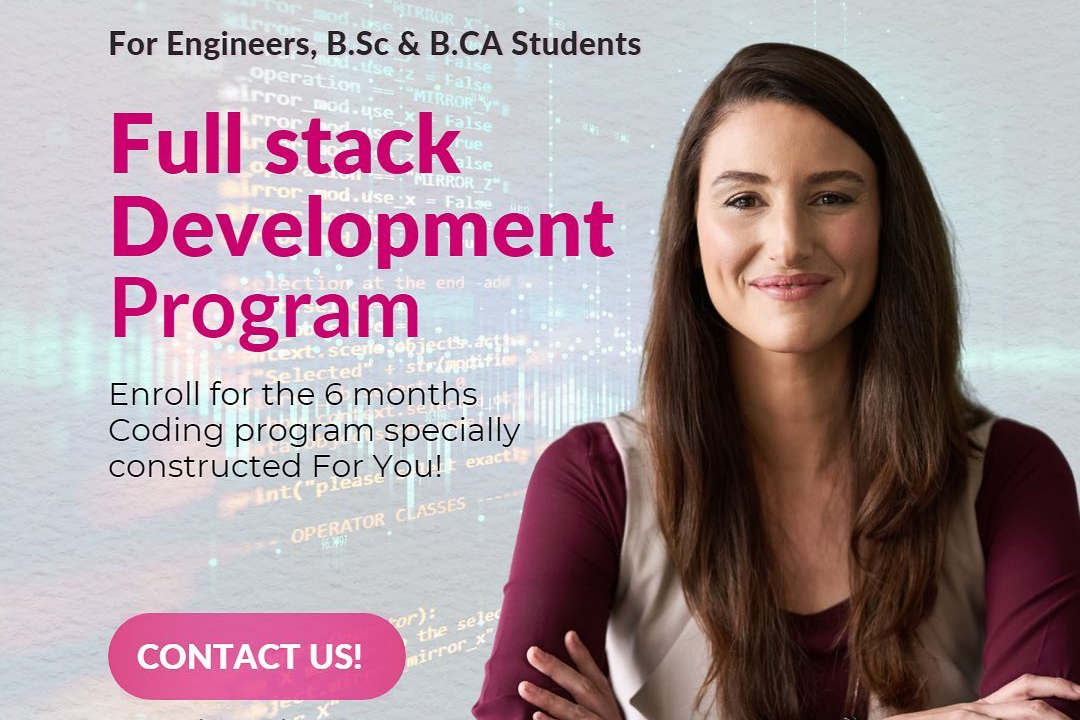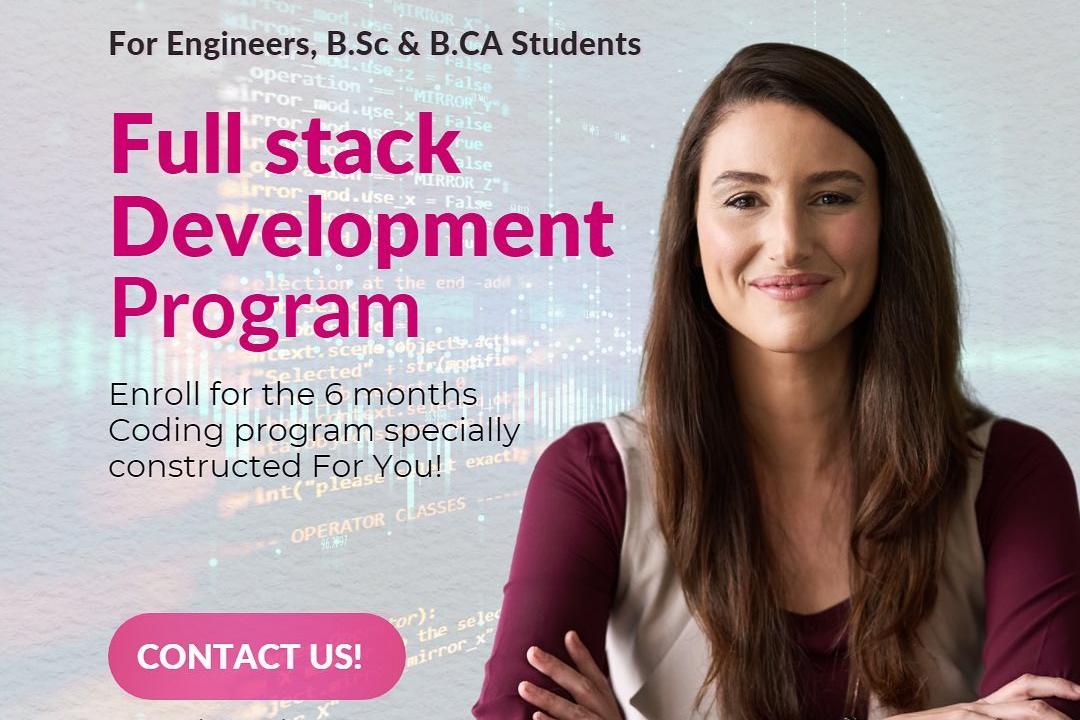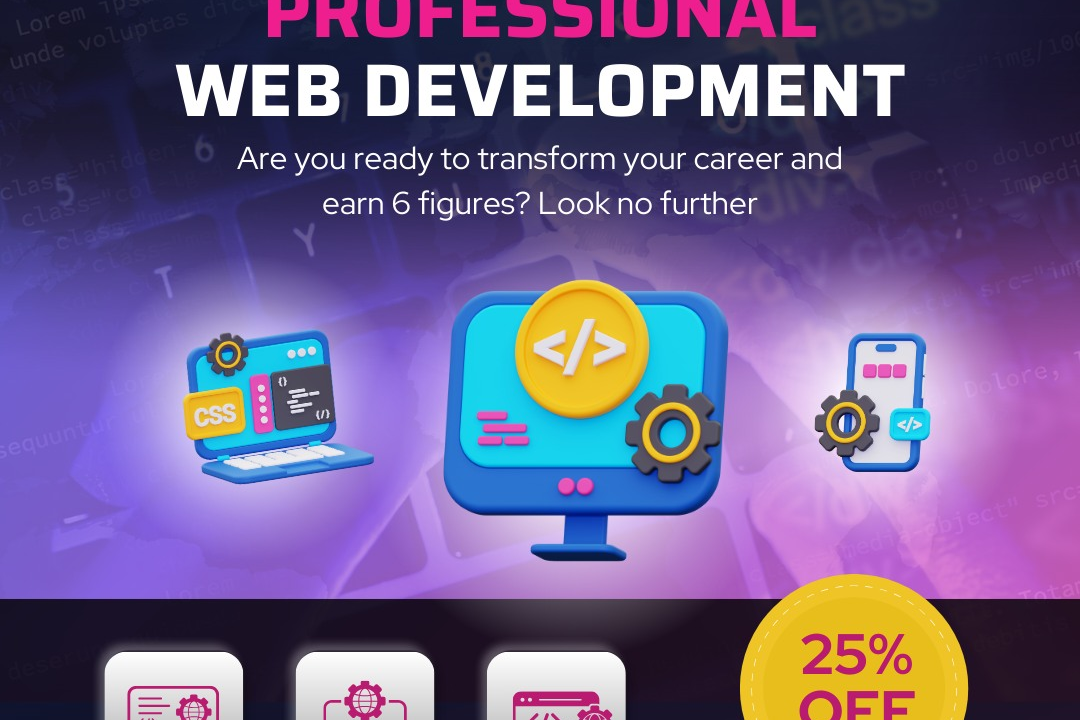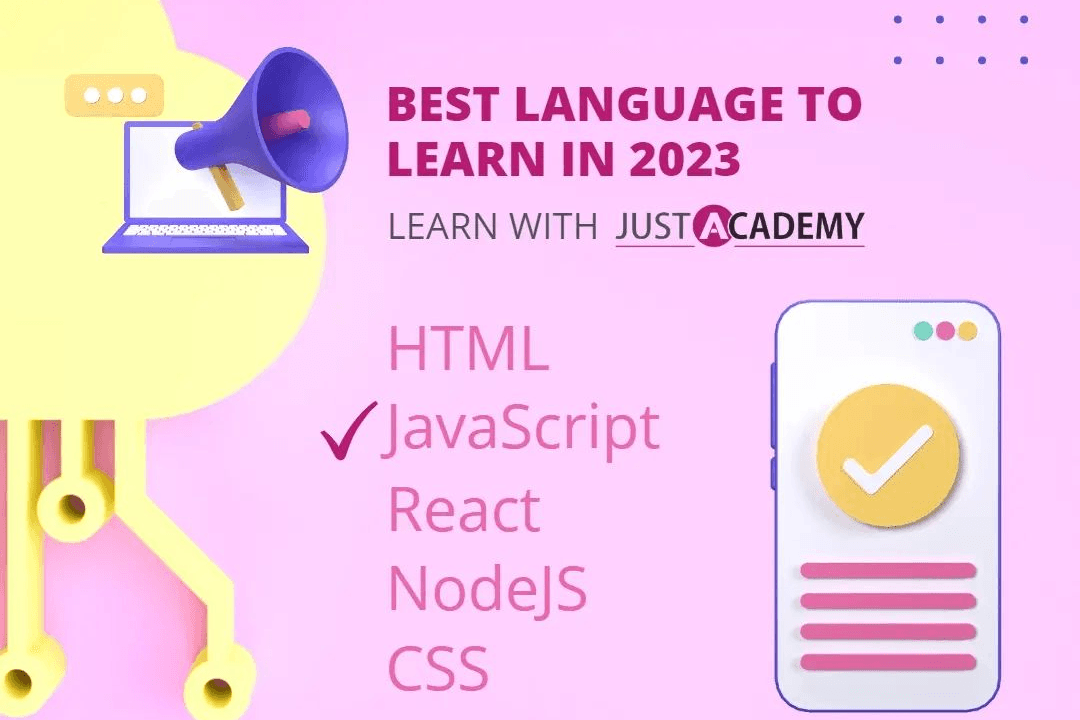Base Interview Question For Php Developer
Essential Interview Questions for PHP Developers
Base Interview Question For Php Developer
Base interview questions for PHP developers are essential as they assess a candidate’s foundational understanding of the language and its ecosystem. These questions typically revolve around core concepts such as PHP syntax, data types, control structures, and functions. By evaluating a candidate's grasp of these fundamentals, employers can determine their capability to build robust applications and troubleshoot issues effectively. Additionally, understanding fundamental concepts ensures that developers can engage with PHP frameworks and libraries more proficiently, laying the groundwork for more complex problem-solving and innovation in real-time projects.
To Download Our Brochure: https://www.justacademy.co/download-brochure-for-free
Message us for more information: +91 9987184296
1 - What is PHP?
PHP is a server side scripting language designed primarily for web development, allowing developers to create dynamic content and interact with databases.
2) What are the main features of PHP?
Key features include open source nature, cross platform compatibility, strong database support, security features, and a rich set of built in functions.
3) What is a PHP variable?
A PHP variable is a symbol used to store data, identified by a dollar sign followed by the variable name, and it can hold various data types like strings, integers, arrays, and more.
4) What are the different data types in PHP?
PHP supports several data types, including strings, integers, floats (double), booleans, arrays, and objects.
5) How do you declare an array in PHP?
An array in PHP can be declared using the array() function or using the shorthand brackets: `$array = array("value1", “value2”);` or `$array = ["value1", “value2”];`.
6) What is the difference between `==` and `===` in PHP?
`==` compares values for equality with type coercion, while `===` checks for both value and type equality, making it a stricter comparison operator.
7) How do you handle errors in PHP?
Errors can be handled using built in error handling functions like `error_reporting()`, `set_error_handler()`, and using exception handling constructs like try catch.
8) What is a session in PHP?
A session in PHP is a way to store data across multiple pages for a user, allowing the persistence of user information during their visit to a website.
9) What are superglobals in PHP?
Superglobals are built in global arrays in PHP that provide access to variables from anywhere in a script, such as `$_POST`, `$_GET`, `$_SESSION`, and `$_COOKIE`.
10) Explain the concept of Object Oriented Programming (OOP) in PHP.
OOP in PHP allows developers to create classes and objects, encapsulating data and methods to enhance code reusability, maintainability, and abstraction.
11 - What is Composer in PHP?
Composer is a dependency manager for PHP that enables developers to manage libraries and packages, ensuring that all dependencies are installed and autoloaded conveniently.
12) How are PHP files structured?
PHP files typically contain HTML mixed with PHP code, with PHP scripts enclosed within `<?php` and `?>` tags, enabling the execution of PHP code during server side processing.
13) What is PDO in PHP?
PDO (PHP Data Objects) is a database access layer providing a uniform interface for accessing different databases with support for prepared statements, which helps prevent SQL injection.
14) What is a PHP framework, and can you name a few?
A PHP framework is a platform that provides a standardized structure to develop web applications more efficiently, with popular examples including Laravel, Symfony, and CodeIgniter.
15) How do you connect to a MySQL database using PHP?
Connection to a MySQL database can be achieved using the `mysqli_connect()` function or PDO, with the necessary parameters such as hostname, username, password, and database name.
16) What is the purpose of the `include` and `require` statements in PHP?
The `include` and `require` statements are used to include the content of one PHP file into another. The main difference is that `require` generates a fatal error if the specified file is not found, while `include` only produces a warning and the script will continue to execute.
17) What is the difference between POST and GET methods in PHP?
The GET method appends data to the URL, making it visible in the browser's address bar, and is limited in data size. The POST method sends data in the request body, allowing more data to be transmitted securely and is primarily used when submitting forms.
18) What is a cookie, and how is it created in PHP?
A cookie is a small piece of data stored on the user's computer by the web browser while visiting a website. In PHP, cookies are created using the `setcookie()` function, which specifies the cookie name, value, expiration, path, domain, and security attributes.
19) What are PHP functions, and how do you create one?
Functions in PHP are reusable blocks of code designed to perform specific tasks. A function is defined using the `function` keyword followed by a name and parentheses. For example:
php
function myFunction() {
// code to execute
}
20) What is the difference between a while loop and a for loop in PHP?
A `while` loop continues to execute as long as a specified condition is true, while a `for` loop is used when the number of iterations is known ahead of time and consists of initialization, condition check, and increment/decrement in a single line.
21 - What is a namespace in PHP?
Namespaces are a way of encapsulating items like classes, interfaces, functions, and constants, helping to avoid name collisions when different libraries or modules are used in the same application.
22) How do you sanitize user input in PHP?
User input can be sanitized using functions such as `filter_var()`, `htmlspecialchars()`, and `mysqli_real_escape_string()` to ensure that any potentially harmful data is properly handled before processing or storing it.
23) What is AJAX in the context of PHP?
AJAX (Asynchronous JavaScript and XML) is a technique that allows web pages to be updated asynchronously by exchanging data with the server in the background. PHP can be used as a server side language to handle the requests and return data to the client without requiring a full page refresh.
24) What is the purpose of the `final` keyword in PHP?
The `final` keyword can be used with classes and methods in PHP to prevent them from being overridden in child classes. A final class cannot be subclassed, and a final method cannot be overridden.
25) How can you prevent SQL injection in PHP?
Preventing SQL injection can be achieved by using prepared statements and parameterized queries with PDO or MySQLi, which separates SQL logic from the data being passed into the SQL query.
26) What is an associative array in PHP?
An associative array is a type of array in PHP that uses named keys that you assign to them, allowing you to store data in pairs—each key is associated with a value.
27) What is the purpose of the `return` statement in functions?
The `return` statement is used to return a value from a function and terminate the execution of that function. It can also be used to return `null` if no value is provided, allowing the function to complete without returning any data.
28) What are traits in PHP?
Traits are a mechanism for code reuse in single inheritance languages like PHP. They allow developers to create reusable methods that can be included in multiple classes, helping to reduce code duplication.
29) What is Composer and how does it facilitate dependency management in PHP?
Composer is a dependency manager for PHP that streamlines the process of managing external packages and libraries by specifying them in a `composer.json` file, allowing automatic updates and version control while ensuring compatibility between packages.
30) How can you work with file handling in PHP?
File handling in PHP involves functions to create, read, write, and delete files on the server. Functions such as `fopen()`, `fwrite()`, `fread()`, and `fclose()` are commonly used to perform file operations securely.
Course Overview
The “Base Interview Questions for PHP Developer” course is designed to equip learners with fundamental knowledge and skills necessary to excel in PHP developer interviews. This comprehensive program covers essential topics such as PHP syntax, data types, control structures, functions, and advanced features like object-oriented programming and error handling. Through real-time projects and practical exercises, participants will gain hands-on experience while understanding common interview questions and best practices. By the end of the course, learners will be well-prepared to confidently tackle PHP development challenges and impress potential employers with their expertise and problem-solving abilities.
Course Description
The “Base Interview Questions for PHP Developer” course is meticulously crafted to provide aspiring PHP developers with a solid foundation in both fundamental and advanced PHP concepts, enhancing their interview readiness. Participants will explore key topics such as PHP syntax, data types, control structures, functions, and object-oriented programming, ensuring a comprehensive understanding of the language. Through engaging real-time projects and practical exercises, learners will not only familiarize themselves with common interview questions but also develop essential problem-solving skills required in the industry. By the end of the course, candidates will be equipped with the confidence and knowledge to excel in PHP developer interviews and stand out in a competitive job market.
Key Features
1 - Comprehensive Tool Coverage: Provides hands-on training with a range of industry-standard testing tools, including Selenium, JIRA, LoadRunner, and TestRail.
2) Practical Exercises: Features real-world exercises and case studies to apply tools in various testing scenarios.
3) Interactive Learning: Includes interactive sessions with industry experts for personalized feedback and guidance.
4) Detailed Tutorials: Offers extensive tutorials and documentation on tool functionalities and best practices.
5) Advanced Techniques: Covers both fundamental and advanced techniques for using testing tools effectively.
6) Data Visualization: Integrates tools for visualizing test metrics and results, enhancing data interpretation and decision-making.
7) Tool Integration: Teaches how to integrate testing tools into the software development lifecycle for streamlined workflows.
8) Project-Based Learning: Focuses on project-based learning to build practical skills and create a portfolio of completed tasks.
9) Career Support: Provides resources and support for applying learned skills to real-world job scenarios, including resume building and interview preparation.
10) Up-to-Date Content: Ensures that course materials reflect the latest industry standards and tool updates.
Benefits of taking our course
Functional Tools
1 - XAMPP: XAMPP is a free and open source cross platform web server solution stack that is essential for PHP development. It allows students to set up a local server environment on their machines, enabling them to test and run PHP applications in a safe space. The inclusion of Apache, MySQL, and PHP in one package makes it an ideal tool for learners to practice coding without the need for complex configurations. XAMPP streamlines the process of deploying applications, ensuring students can easily manage their projects and databases. As part of the course, learners will engage with XAMPP to simulate real world scenarios and reinforce their understanding of PHP project development.
2) PHPStorm: PHPStorm is a powerful Integrated Development Environment (IDE) specifically designed for PHP developers. Its advanced code analysis, debugging, and testing capabilities make it a key tool in the course. Students will explore features such as intelligent code completion, on the fly error checking, and seamless integration with version control systems. PHPStorm enhances productivity by providing tools to streamline development workflows. By using this IDE, learners can focus on writing high quality code efficiently, which ultimately prepares them for professional development roles in the industry.
3) MySQL: MySQL is a widely used relational database management system that complements PHP development. In the course, students learn to create, manipulate, and manage databases, which is crucial for building dynamic web applications. Understanding MySQL enables learners to implement data storage solutions effectively, work with CRUD (Create, Read, Update, Delete) operations, and optimize queries for performance. The integration of PHP and MySQL is fundamental, as many web applications rely on database interactions. Hands on practice with MySQL during the training program equips students with essential skills required for backend development.
4) Git: Git is a version control system that allows developers to track changes and collaborate on projects effectively. This tool is critical for students to understand the importance of maintaining code history, branching, and merging. The course incorporates Git to teach best practices for collaborative development, enabling learners to work as part of a team. By employing Git, students gain experience in managing projects, resolving conflicts, and promoting code quality through code reviews. Familiarity with Git not only enhances individual skills but is also a highly sought after competency among employers.
5) Composer: Composer is a dependency manager for PHP that simplifies the process of managing libraries and packages within PHP projects. This tool enables students to easily integrate third party libraries, ensuring they have access to the latest tools and frameworks. In the course, learners will explore how to use Composer to streamline project setup and manage dependencies efficiently. Understanding Composer fosters essential skills for maintaining codebases, improving project structure, and promoting best practices within PHP development. The ability to use Composer effectively prepares students for real world scenarios where rapid development and scalability are critical.
6) Postman: Postman is an API development tool that simplifies building, testing, and sharing APIs. In the context of the course, students are introduced to the importance of APIs in web applications and learn how to interact with them effectively. Postman enables learners to send requests, analyze responses, and troubleshoot issues with APIs. By using this tool, students can gain practical experience in API testing and understand how to integrate frontend and backend systems seamlessly. Familiarity with Postman equips them with the skills to handle backend services and enhances their overall understanding of how PHP interacts with APIs in real world applications.
7) Laravel: Laravel is a robust PHP framework that simplifies web application development. It follows the Model View Controller (MVC) architectural pattern, making it easier for students to structure their projects. In the course, learners will explore key features of Laravel, such as routing, middleware, and Eloquent ORM, which streamline database interactions. By working with Laravel, students acquire skills that enhance their productivity and enable them to build scalable applications. The framework’s emphasis on clean and maintainable code prepares learners for professional environments, as Laravel is widely adopted in the industry.
8) Visual Studio Code (VS Code): VS Code is a lightweight yet powerful source code editor that supports a variety of programming languages, including PHP. It is packed with features that cater to developers, such as extensions, debugging capabilities, and integrated terminal support. Students will learn how to customize their development environment with VS Code to boost their coding efficiency. The editor’s versatility and user friendly interface make it an essential tool for PHP development, providing learners with the skills to create efficient workflows and improve their coding practices.
9) Docker: Docker is a containerization platform that allows developers to package applications and their dependencies into isolated environments. In this course, students will explore how Docker can streamline the development process, enabling them to replicate production environments on their local machines. By using Docker, learners can easily manage and deploy multi container applications, enhancing their understanding of modern application architectures. Familiarity with Docker prepares students for a DevOps oriented workflow, making them invaluable assets to future employers who utilize containerization strategies.
10) PHPUnit: PHPUnit is a unit testing framework for PHP that helps developers ensure their code is functioning as expected. The course will introduce students to the importance of testing and the best practices for writing testable code. Through hands on experience with PHPUnit, learners will understand how to create and run test cases, leading to higher quality and more maintainable code. Mastering unit testing equips students with vital skills that are mandatory in professional development settings, enabling them to catch and fix bugs early in the development process.
11 - Apache & Nginx: Understanding web servers is crucial for PHP developers, and both Apache and Nginx are two of the most popular web servers used in the industry. During the course, students will learn how to configure and manage these servers to serve PHP applications efficiently. By exploring the differences between the two servers and their performance characteristics, learners will gain insights into server management and optimization tactics. This knowledge is invaluable for deploying applications in real world environments and enhances students' understanding of the full stack.
12) RESTful APIs: Understanding RESTful API principles is fundamental for backend development in PHP. This course will cover essential concepts, including endpoint design, status codes, and data formats (like JSON). Students will learn how to create and consume RESTful APIs, preparing them for the modern web landscape where APIs are essential for connecting different services. By working with RESTful APIs in their projects, learners will enhance their ability to build applications that interact seamlessly with external systems and services.
13) HTML & CSS: A strong foundation in HTML and CSS is critical for PHP developers, as these languages are integral to frontend development. In the course, students will review essential HTML structures, semantic elements, and CSS styling techniques. By gaining proficiency in these areas, learners will be better equipped to build dynamic web pages that utilize PHP for backend functionality. Understanding HTML and CSS alongside PHP provides a holistic view of web development and enables students to create interactive, visually appealing applications.
14) Frameworks & Libraries (such as Symfony or CodeIgniter): Beyond Laravel, the course may also introduce students to other PHP frameworks and libraries like Symfony or CodeIgniter. By exploring the features and benefits of different frameworks, learners can choose the best tools for specific project requirements. Understanding various frameworks broadens students’ skill sets and prepares them for diverse challenges in the job market, as different companies may use different PHP frameworks based on their specific needs.
15) Security Best Practices: In an age where cyber threats are prevalent, understanding web application security is essential for PHP developers. The course will cover security best practices, including data sanitization, validation, password hashing, and preventing SQL injection and Cross Site Scripting (XSS) attacks. By emphasizing security, learners will be able to develop applications that are robust and secure, giving them a competitive edge in the industry. This knowledge fosters a proactive approach to security that is crucial in maintaining the integrity and reputation of web applications.
Browse our course links : https://www.justacademy.co/all-courses
To Join our FREE DEMO Session:
This information is sourced from JustAcademy
Contact Info:
Roshan Chaturvedi
Message us on Whatsapp: +91 9987184296
Email id: info@justacademy.co











